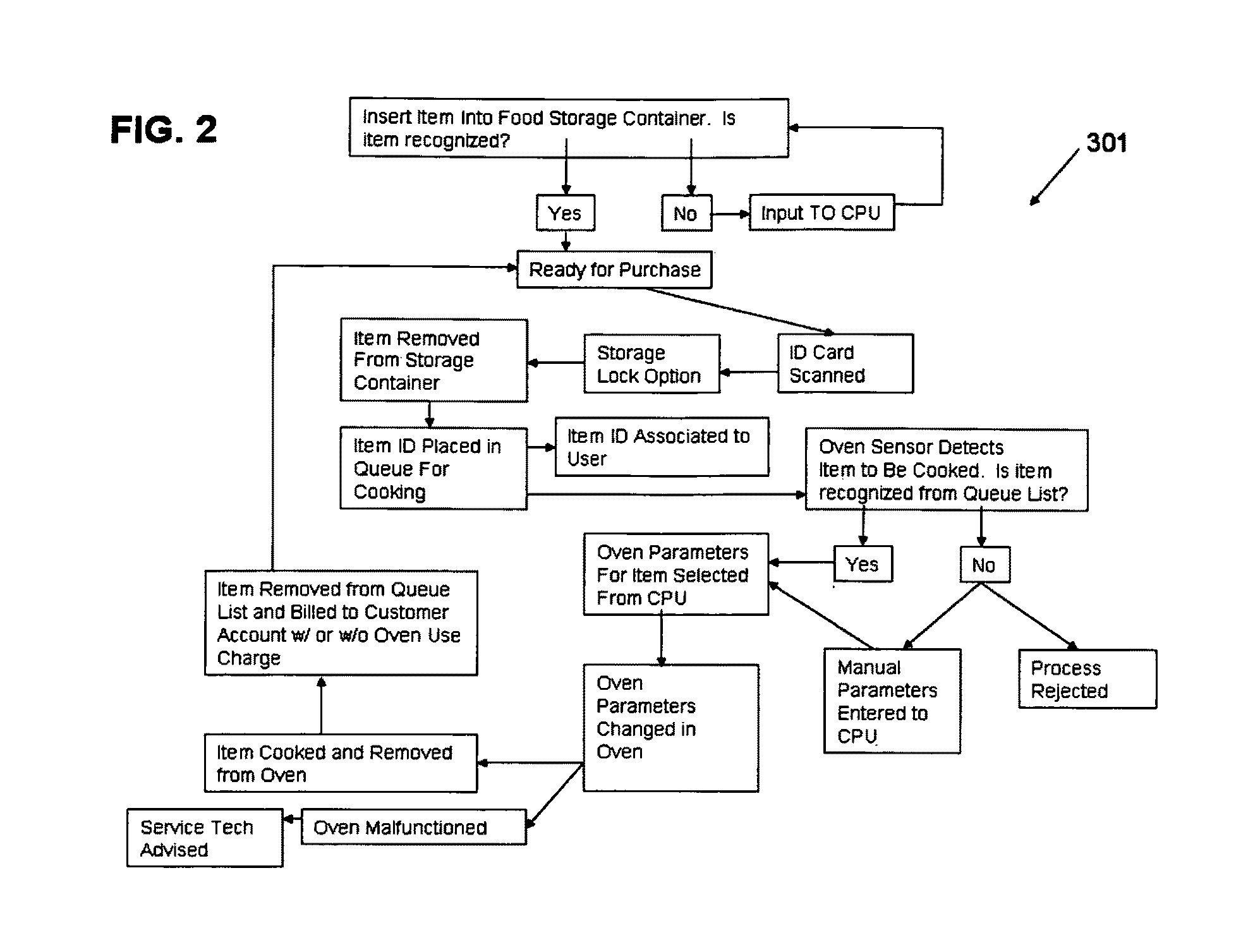Although these bulbs are effective at reducing cook times, they have several primary draw backs which have to this point deterred the prior art from successful introduction in the marketplace.
Specifically;1) The price for bulbs is high relative to the entire price required to commercialize a unit such as a toaster.2) Bulbs can easily get damaged by oils and
grease common in the
cooking process.3) Use of glass shielding over the bulbs decreases the intensity of the
radiant energy.4) Although fewer, longer,
high voltage bulbs can be used, the
voltage poses safety risks and therefore, low voltages are preferable.
Unfortunately though, the use of smaller bulbs further requires that many bulbs be used; complicating manufacturing and overall pricing issues.
Clearly the use of a single wire with a
voltage placed from end-to-end in order to achieve the power requirement is not feasible.
The problem with this relates to the inherent
heat capacity of the element.
Thus, the time required to heat the element would be extraordinarily long and not achieve the goal of quick cooking times.
Clearly placing and distributing these elements evenly across the surface would be extremely difficult and impossible for manufacture.
Although the
stored energy high speed oven would appear to have significant commercial use, in practice, there are several key inherent obstacles that have inhibited the oven's success.
Specifically,1) A unit able to be operated several times sequentially has a battery weight over 50 lbs and this is too high for most people to easily
handle and allow for easy moving of the unit.2) A unit able to be operated several times sequentially has a relatively high
unit cost compared to
slow speed cooking units such as toasters or toaster ovens due to battery cost.3) Due to the high speed cook cycle, variances of a few seconds in cooking can significantly affect the quality of the cooked foods.4) Due to the high power of the oven, variations in the proximity of the food to the heating elements (which is a function of the position of the internal oven's food holding grates) can significantly affect the quality of the cooked foods.
Several problems with the units exist though:1) In order for the vending machines to deliver pizza in a reasonable time when operated at 120V, the systems must maintain the cooking elements in a preheated state which wastes a significant amount of energy and makes them expensive to operate.2) The units have limited versatility as the vending
machine is structured to only process the pizza that has been stocked in the machines and they do not allow a user to insert a to-be-
cooked food that they desire.3) In addition, because the storage of the food is inherently coupled to the cooking, a robotic system is required to
handle the food which can easily lead to
jams and malfunction.4) Another difficulty with the units relates to the
large size of the units which thus limits the market in which the units can be sold as many offices do not have the space required.5) Further, the handling of cash payments can increase the overall volume of the unit and complicate the servicing of the vending
machine.
While this vending system works well for the sale of individual items removed from the unit, it does not provide the necessary elements for integration with a high speed cooking oven or secondary vending process associated with a high speed stored energy oven.
In considering the combination of a high speed stored energy oven incorporating batteries, such as that described in U.S. Provisional Application 60 / 822,028 filed on Aug. 10, 2006 and
patent application “
Wire Mesh Thermal Radiative Element and Use in a Radiative Oven” filed by De Luca on Dec. 29, 2008, with a vending machine system, several difficulties arise.
This position may not be ideal with respect to the positioning of the oven or
food storage units.2) The separation of the oven from the stored
energy source requires appropriate
sizing and positioning of the
high current elements.
 Login to View More
Login to View More  Login to View More
Login to View More 


